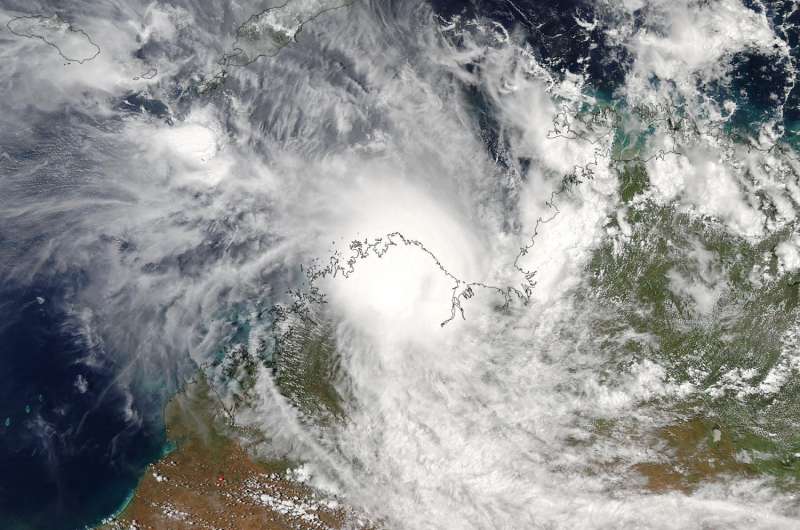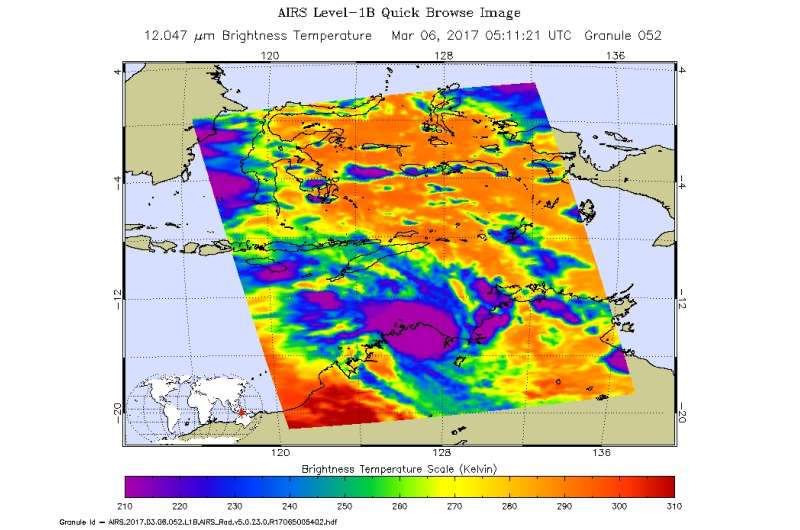NASA takes a double-look at Tropical Cyclone Blanche

Tropical Cyclone Blanche formed on March 5 near Australia's Top End, and made landfall the next day as NASA's Aqua satellite passed overhead gathering images in visible and infrared light.
Top End is the northernmost geographical region of Australia's Northern Territory.
The Atmospheric Infrared Sounder or AIRS instrument aboard NASA's Aqua satellite looked at Tropical Cyclone Blanche in infrared light while the Moderate Resolution Imaging Spectroradiometer or MODIS instrument aboard the satellite captured a visible image of the storm. Blanche is located over Australia's Top End.
The AIRS image was taken on Mar. 6 at 05:11 UTC (12:11 a.m. EST) and showed some cloud top temperatures of thunderstorms within Blanche were as cold as minus 63 degrees Fahrenheit (minus 53 degrees Celsius). Those powerful storms surrounded Blanche's low-level center of circulation. NASA research has shown the storms with cloud tops that cold have the potential to generate heavy rainfall.
Four minutes after AIRS analyzed the storm the MODIS instrument provided a visible picture of Tropical Cyclone Blanche at 05:15 UTC (12:15 a.m. EST). The MODIS image showed that most of Blanche had already moved over land and its northeastern quadrant stretched into the Joseph Bonaparte Gulf.

On March 6 at 1500 UTC (10 a.m. EST), Tropical Cyclone Blanche made landfall on the Kimberley Coast and is dissipating. It was located about 182 nautical miles west-southwest of Darwin, Australia. It was centered near 16.0 degrees south latitude and 127.2 degrees east longitude.
The Joint Typhoon Warning Center's final warning at that time noted that Blanche had maximum sustained winds near 34.5 mph (30 knots/55.5 kph) and was a depression. The storm was moving to the south-southwest at 12.6 mph (11 knots/20.3 kph) and further inland in Top End.
The Australian Bureau of Meteorology noted on March 6 (EDT) to "Expect scattered showers and storms to continue over western Top End with falls of 30 to 80 mm. Heavier rainfall may extend to the Gregory District on Tuesday. Some roads may remain impassable for some time until conditions improve."
Provided by NASA's Goddard Space Flight Center




















